Our Surrogacy Journey: Jonathan & Ian
Jonathan: Ian and I have been together 14 years and married for nine. I always knew I wanted children from a very young age, but the question of ‘how’ always loomed large. People were often curious how I planned to become a father. Personally, I wasn’t sure, but I knew I would start to investigate it properly once I was in a committed relationship.
Ian: There wasn’t any pressure on us – no biological clock ticking down – but the conversation did happen quite naturally in the early stages of our relationship.
Jonathan: About four years ago, on our anniversary, we ended up having a more serious conversation about becoming parents. I brought it up at dinner and Ian was fully on board. From there, we started gathering as much information as we could.
Ian: We found that there really wasn’t that much information available around surrogacy, especially for gay couples. Pretty quickly, we realised there were quite a few obstacles when it came to pursuing surrogacy in the UK, and we’re actually quite familiar with the US, so it felt like the better choice for us to do it out there.
Jonathan: We wanted to make the decision that would cause the least anxiety possible – especially in terms of all the legalities. In the US, the surrogate and intended parents are equally looked after but that’s not always true in other countries. We knew people who had done surrogacy in the UK with a friend, and the friend had then decided they wanted to keep the baby. UK law pretty much allows that, and while they did manage to get it sorted in the end, we didn’t want to risk being in that situation.
Ian: The US isn’t without its pitfalls, though. For one, health insurance is much more complicated, and you can’t rely on the NHS for any kind of emergencies. That’s what contributes to a lot of the cost; it’s so much more expensive to do over there. But it is treated more like a business transaction, and everyone’s rights are equally protected.
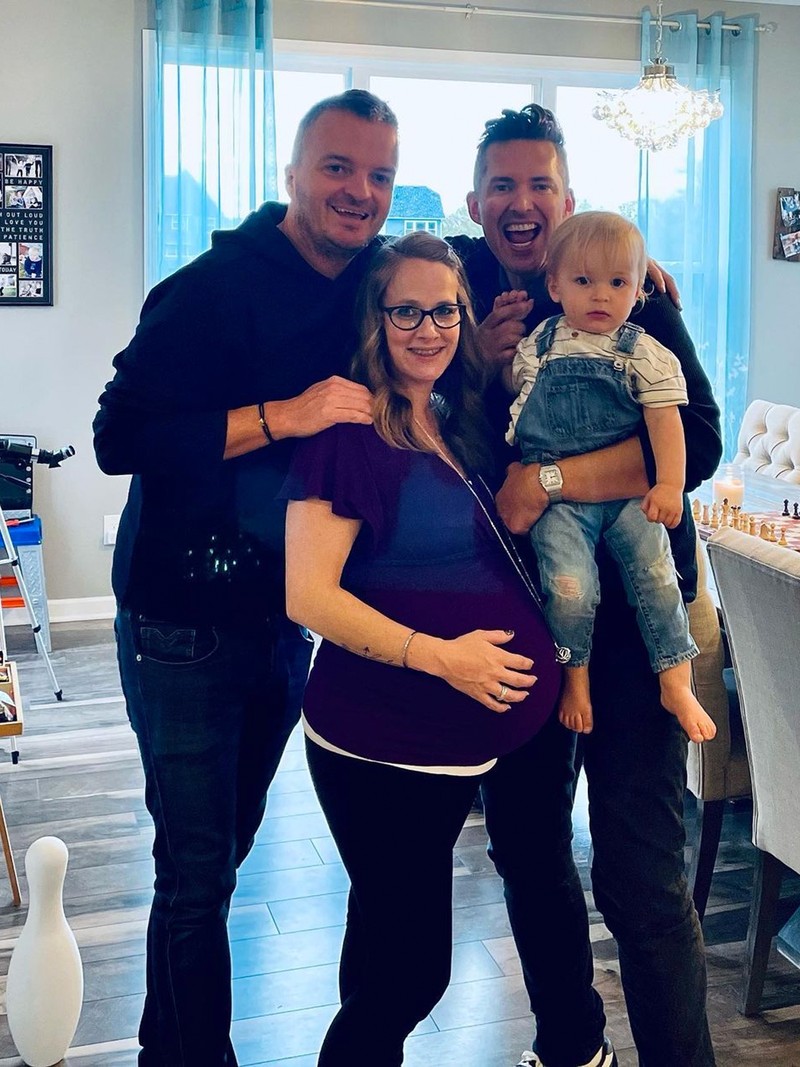
Jonathan: We found a US surrogacy agency that connected us with a fertility clinic in New York, which is where we did the sperm analysis. They also gave us a directory of egg donors to choose from. That was a strange part of the process – it was quite transactional and it’s entirely anonymous. Most people don’t realise that our surrogate and egg donor are two different people – we’ve never met the latter.
Ian: We managed to harvest 25 eggs and decided to contribute half my sperm and half of Jonathan’s. Some of them grew, some of them didn’t and we ended up with about 15 eggs. At that point, they check for genetic disorders and grade the eggs by quality. That took us down to 14. We just wanted to put the best egg forward – we had no assumption or concerns around who’s sperm was involved. We only transferred one egg and were lucky that it took straight away.
Jonathan: When our son was born, there were certain characteristics that made us think – just between ourselves – whose sperm it probably was. Unfortunately, we were forced to find out properly when we were doing some of the citizenship paperwork later on – the courts forced us to declare it, so we had to ask the clinic. It’s still not something we talk about publicly. Wilder is our son, and that’s it. The one thing we said was if we did it again, we’d try to use the other person’s sperm – and luckily, that was possible.
Ian: It was the surrogacy agency that matched us with our surrogate. They treat it a bit like a dating site. Each side fills out a questionnaire and then the agency sifts through the answers to see who’s looking for a similar experience. Not everyone is looking to carry a baby for a gay couple, for example, but there are lots of questions that are designed to filter out those different beliefs. It’s very much a two-way street; the agency just wants you to be as compatible as possible.
Jonathan: Our agency was adamant that all their potential surrogates had children already and they had to have a partner, too. It alleviates any emotional issues and ensures the surrogate has the right support network around her. If they have experience with pregnancy already, then that’s a good thing. Our first surrogate pulled out shortly before we were due to start in January 2020 and our second, Stephani, had been matched with three previous couples who had all backed out as well. She already has three children with her husband George but was very passionate about carrying a child for a gay couple. I think it was fate.
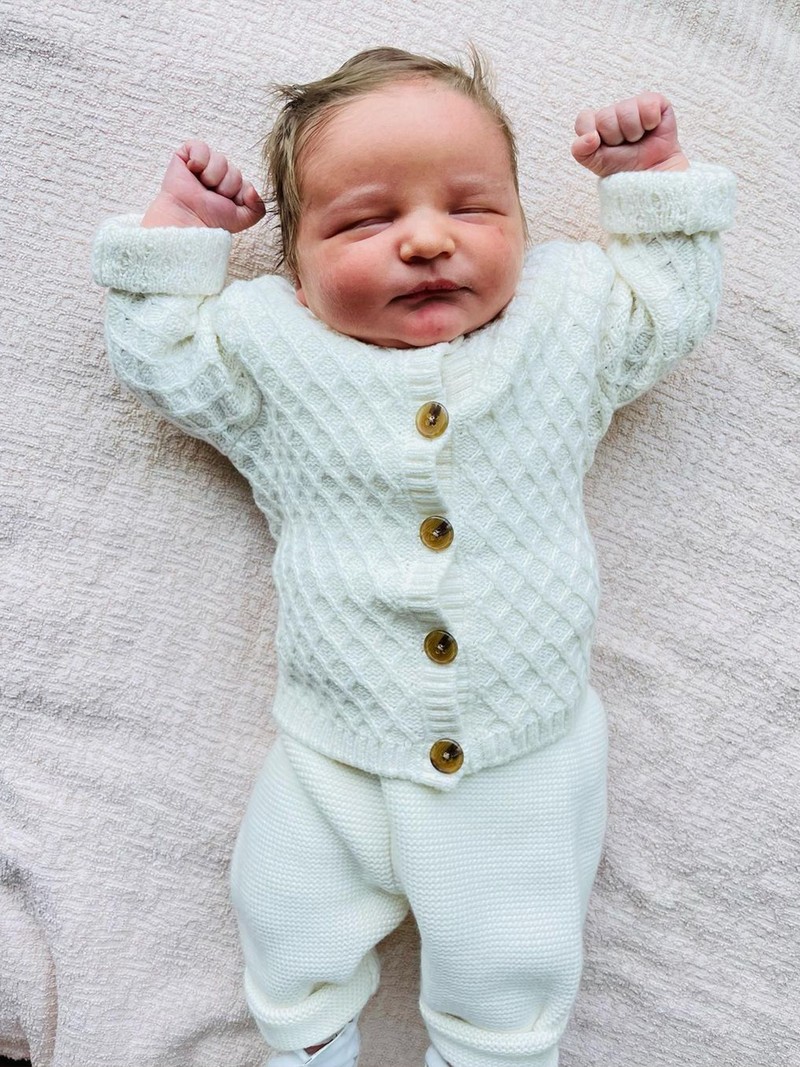
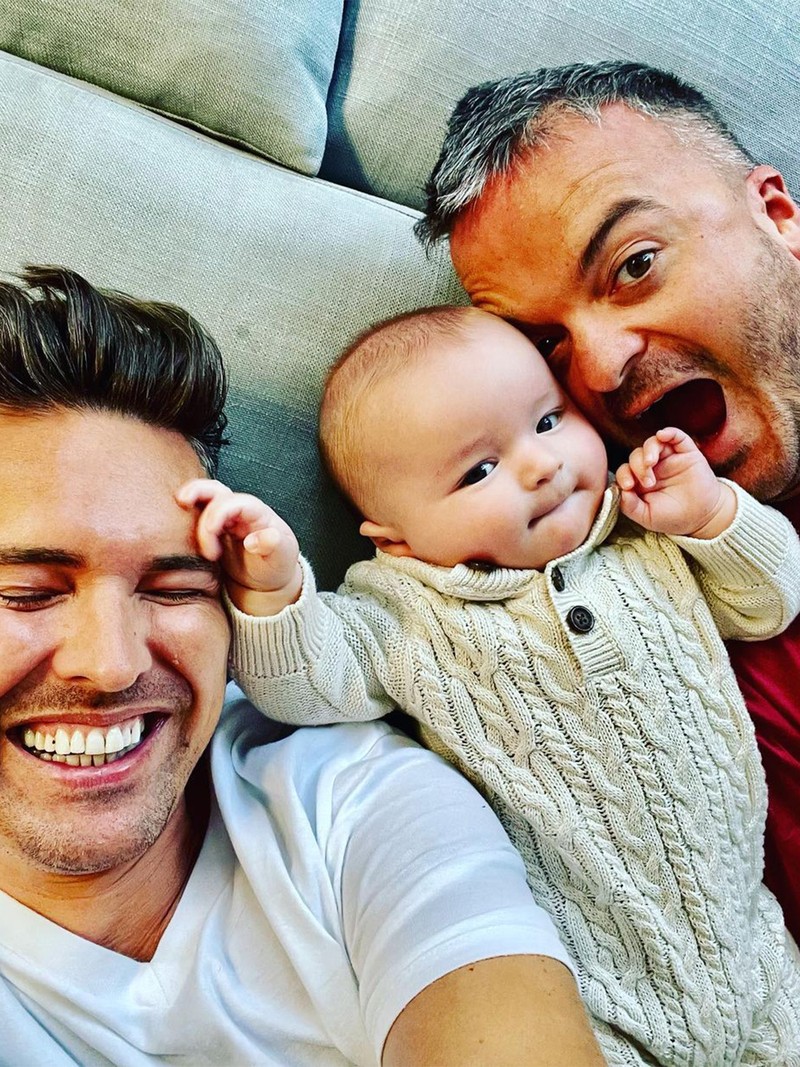
Ian: The other couples had backed out on Stephani because they were worried about the thinness of her womb lining. But she was adamant it wasn’t a problem – she even ran her own ‘mock cycle’ to prove she could carry a pregnancy. After speaking to the IVF doctor, we were confident she was the right person for us. We drew up a contract to outline the terms of the surrogacy, including a set fee and costs to cover things like maternity clothes and hospital appointments. You can’t monitor everything a surrogate eats or how much exercise she does – but no alcohol, drugs or smoking is a stipulation. There’s also an agreement on termination – both sides can agree on the different situations where it might be the best decision for all involved. Ultimately, though, you have to trust your surrogate for the relationship to work.
Jonathan: Because of Covid-19, we never met Stephani in person until the day she gave birth. We were matched in February 2020 and then the pandemic hit. By the second week in March, the world was shutting down and Stephani’s flights to New York started getting cancelled. Incredibly, she took it upon herself to go straight to the airport and get on the last flight out. Her hotel in New York had closed, but she and George made sure she was the last transfer in the hospital that day. She was so determined to help us.
Ian: We had planned to fly out during the pregnancy, but that wasn’t possible. Thank goodness for Zoom and WhatsApp – both helped us be part of the pregnancy journey. It was a shame not to be able to feel movement or anything like that, but we made the best of it.
Jonathan: Wilder was due in December 2020, and it was agreed I would go to the US in early November while Ian was working the Middle East. Then, the UK went into a second lockdown and the US barred foreign travellers. We found a loophole that said we could enter the US from Mexico, as long as we spent two weeks there beforehand. I had a friend’s wedding there, so I went early and just stayed on. When I saw Ian had called one day, I didn’t clock that he might have news about the baby but he was calling to say Stephani’s waters had broken. I went straight into planning mode, trying to get myself on the first flight out to Minneapolis. It quickly became clear I wouldn’t get there that night; it was pretty stressful.
Ian: Wilder was also more than a month early, so we were both worried about whether the delivery would go smoothly. It was the first time we’d done this, and we hadn’t even ordered all the kit we needed. I remember going online and rush ordering pushchairs to be delivered to Minneapolis!
Jonathan: Around 2am my time, George (Stephani’s husband) called us so we could jump on Zoom and be in the delivery room with them while Stephani had an emergency C-section. A Zoom birth felt very 2020… I then managed to get to Minneapolis about ten hours later and Ian was about 12 hours behind me. Wilder was in the NICU for the first week or so because he had a stiff lung but we were lucky enough to be at a hospital – Maple Grove – which was very surrogate-friendly. They gave us our own private room, and George and Stephani had their own private room too. That’s how much they wanted to accommodate everyone.

Ian: The minute Wilder was born, the legal admin kicked in. We were constantly initialling things, signing things, getting things witnessed. No one had ever given us an exhaustive list of all the paperwork involved, so I understand how it could easily overwhelm some couples. Health insurance, for example. Stephani’s health insurance covered her and the baby right up until the birth. Then, as intended parents, we needed to have a policy that took over for Wilder from there. But you can only apply for that policy when the baby is around 24 or 25 weeks – and no one tells you that you have to have all the documents, information and scans to back it up.
Jonathan: After Wilder was released from NICU, the plan had always been to go down to Miami to nest for a little bit. We have a house there, so it felt like a good place to find our feet and get the last bits of paperwork sorted. We ended up staying there for five months – mainly because we needed a passport for Wilder, which took far longer to arrive than it should have. Looking back, it was such a loving time when we all really bonded. In terms of parenting, Ian and I have always been very 50:50 from day one.
Ian: One of the reasons Minnesota is so popular for surrogacy is the legal system there is quite attuned to how things should work. First, both your contract with your surrogate and your egg donor go through the court before the child is born. The judge then makes a ruling stating that the intended parents – me and Jonathan – are and will only ever be that child’s parents. That judgement goes to the hospital and allows them to raise the birth certificate solely in our names. We could then get a passport and social security number for Wilder – which we needed to be able to leave the country with him. We could only apply for UK citizenship and UK parentage order once we were back on UK soil. Everything had to be heard by the High Court and although it’s largely considered a formality, it’s still a serious piece of legal work that comes at quite a cost. It can also take up to nine months to complete. I understand why it’s all so complicated – the truth is child trafficking is a real problem.
Jonathan: After all of that it’s kind of remarkable we decided to have another baby via surrogacy. But, of course, we had so much more knowledge this time round. It’s been a lot more streamlined too – the same fertility clinic, same batch of eggs, same surrogate, same hospital. We’ve also been much more present with Stephani during this second pregnancy. Best of all we were very much in the room this time, with Stephani and George. Aster was born at 39 weeks and it was a through-the-night labour. He arrived at sunrise and it was the most incredible moment. Everyone was tired (mostly Stephani) and emotional but it was the most incredible experience none of us will forget.
Ian: This time round we've also had Wilder in tow, which has been a nice distraction! In truth, Stephani was really the one asking us whether we wanted to do it again. She had to wait nine months because of her C-section but she’ll be 40 soon, and we knew we wanted our children to be close in age. It felt like now or never.
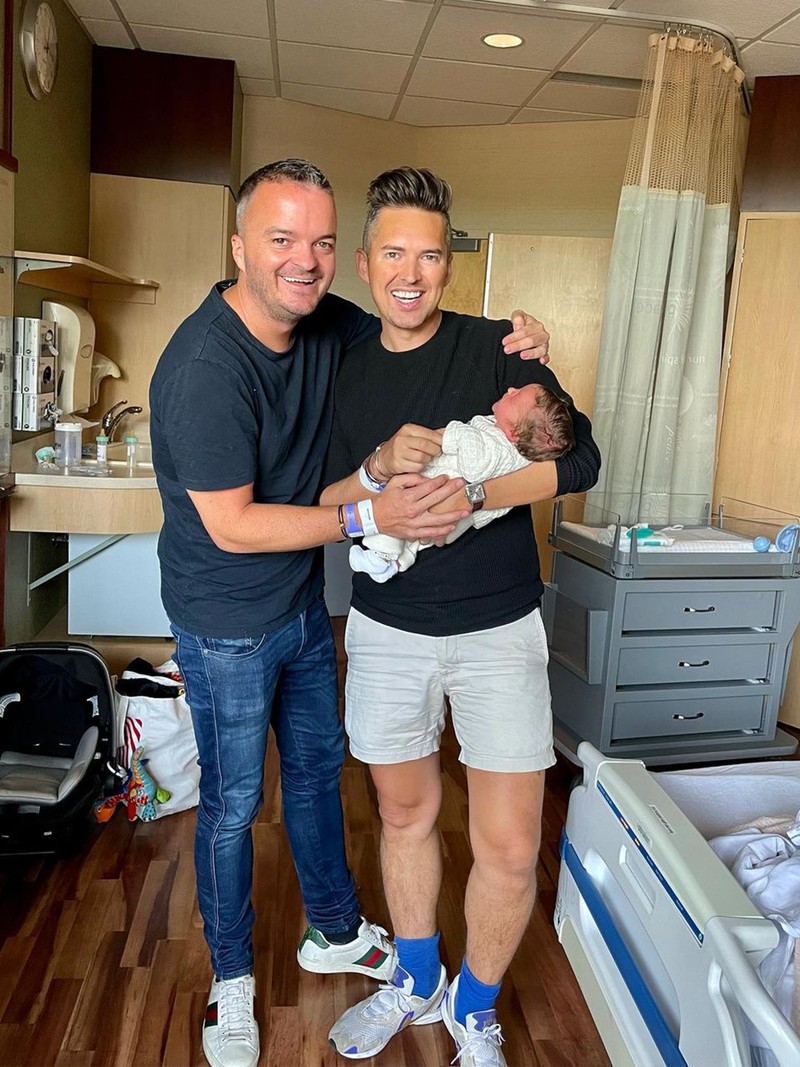
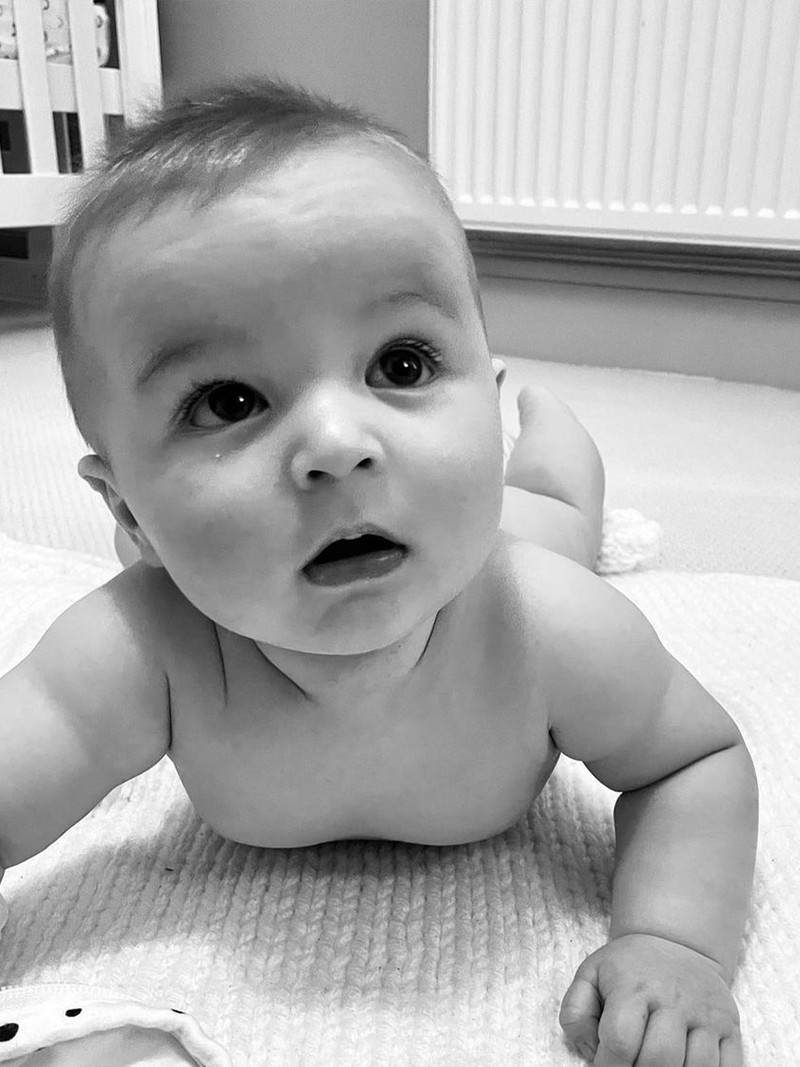
Ian: Wilder has been incredible with Aster. We were a little concerned how he would take it – especially as he’s still so young to understand, but it's been wonderful to watch. Wilder slipped straight into big brother duties, helping us with nappy changes, feeding and giving him little cuddles when he cries. After the arrival, we spent a week in Minneapolis with Stephani, George and the kids. That was lovely, as Covid limited that last time! It’s also important to us to have memories to share with the boys from our time in Minneapolis, so we spent time taking lots of pictures to show them when they’re older. Now, we’re looking forward to watching them grow side by side as brothers and enjoying all the world has to offer. I don’t want to put too much pressure on the future; for now it’s about enjoying what we have.
Jonathan: Going through surrogacy has taught us so much – I suppose mainly about other people's assumptions. For instance, people are always surprised that Wilder looks like us… mostly because they assume he’s adopted. They also presume he’s only ever had formula, but Stephani pumped breast milk and sent it to us via FedEx for the first six months of Wilder’s life and she's now expressing milk for Aster, too.
Ian: The advice I’d give other couples thinking of going down this route is to really do your research and don’t rely on blogs for your information. It’s really worth talking to couples who have been through it and try to meet as many agencies as possible, so you really know what your options are. Be aware how much of your time it will take up, though – there really is so much admin involved. Everyone calls it a journey and it is – emotionally and financially. Luckily, we’re both glass half full kind of people, so I wouldn’t change any of it.
Visit MySurrogacyJourney.com and the NHS website for more information on surrogacy, IVF, adoption and donor insemination.
DISCLAIMER: Features published by SheerLuxe are not intended to treat, diagnose, cure or prevent any medical issues. Always seek the advice of a qualified expert for any questions you have regarding surrogacy.
DISCLAIMER: We endeavour to always credit the correct original source of every image we use. If you think a credit may be incorrect, please contact us at info@sheerluxe.com.
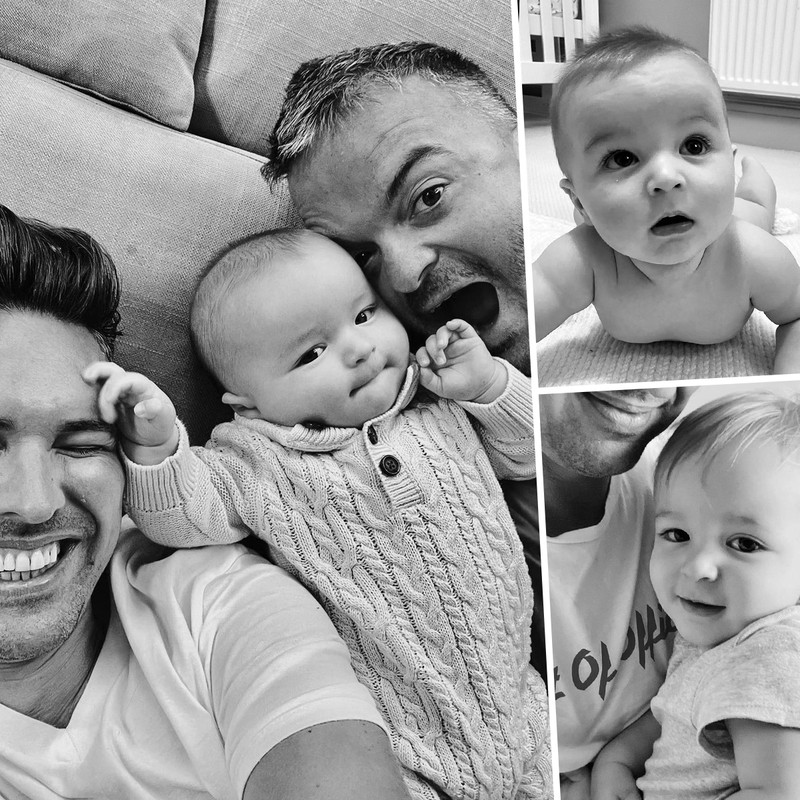
/https%3A%2F%2Fsw18.sheerluxe.com%2Fsites%2Fsheerluxe%2Ffiles%2Fwebsite-images%2F2025%2F04%2Fnew-parenting-background-image.jpg?itok=rRrLkJpg)